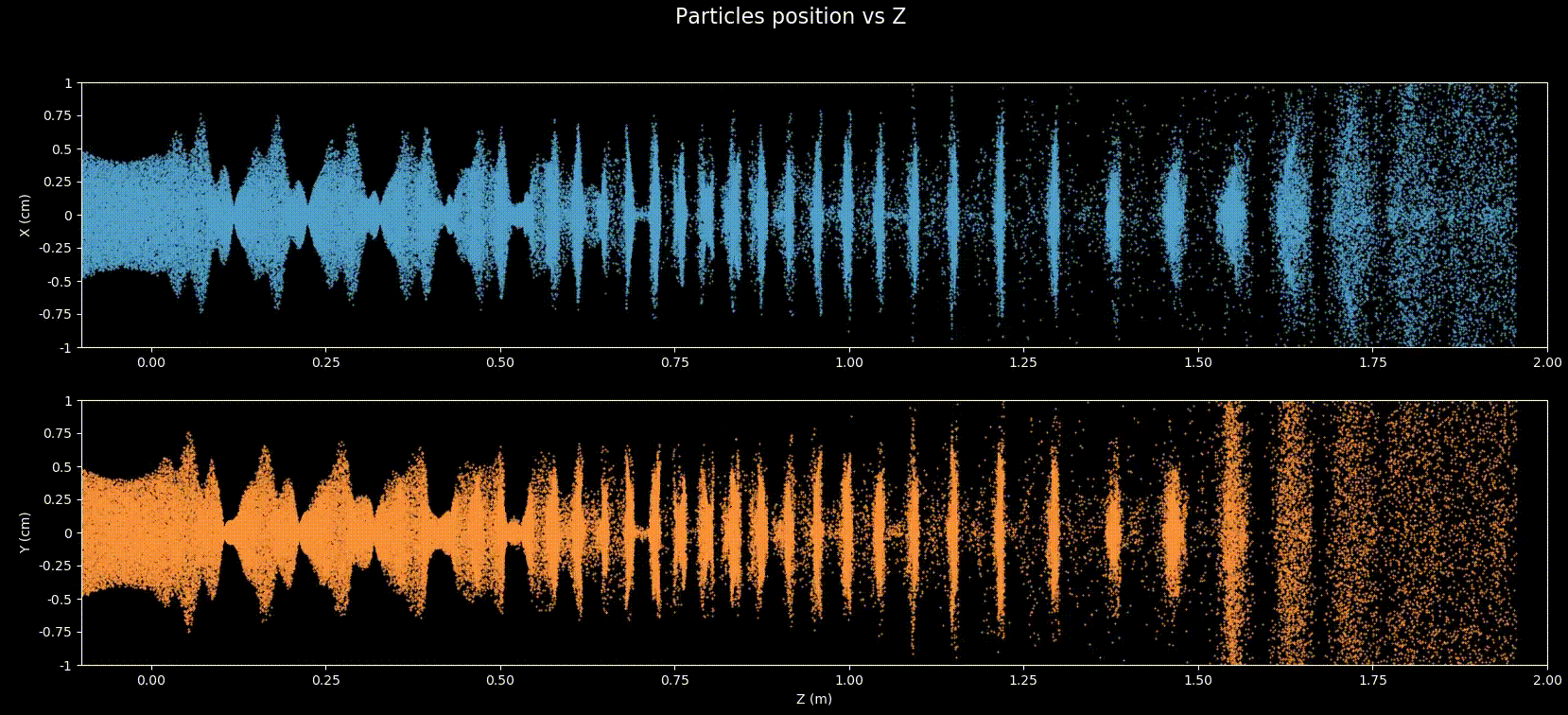Isotope Decay at Rest Experiment (IsoDAR)
Jun 2018 - March 2020
Supervisor: Prof. Janet Conrad
🏫 Massachusetts Institute of Technology (MIT)
The IsoDAR experiment searches for sterile neutrino oscillations and non-standard neutrino interactions. Once built, the IsoDAR accelerator will send dihydrogen molecules through a radio frequency quadrupole (RFQ), then a cyclotron, to then impinge onto a Be and Li target, producing antineutrinos that we detect and can study.
To predict the behavior of the H2+ through the RFQ, we simulate it.
 |
|---|
| Video of an RFQ simulation |
The Problem
All RFQ simulation software at the time had at least one problem:
- By not simulating space-charge (interaction between charged particles) it was inaccurate.
- It was proprietary.
- It didn’t play well with other software (such as the input and output of other particle accelerator elements), and was difficult to use and tune.
- It was slow
The Solution
I developed PyRFQHelper, an RFQ simulation software from the ground up designed to solve those problems and more. To address the issues:
- It’s built on top of WARP, a particle-in-cell simulation framework that takes space-charge into account.
- It’s built open-source.
- It’s built to accept a wide variety of input data forms and output a simple format.
- Despite already being faster, we integrated parallel-processing capability.
In addition, it:
- Visualizes simulation results
- Automatically calculates statistics of interest (emittance, electric field, etc.)
- Uses clustering to determine particle bunch size and statistics at simulation end
Simulations were also easily customizable (being built on top of WARP), so new components in different shapes could easily be added or removed from the simulation.
Results
A simulation software that performs as fast, and with parallelization, faster than competing software, that’s flexible and scientifically accurate.
More about IsoDAR can be read at the website or in the paper.
Project code can be found here.
